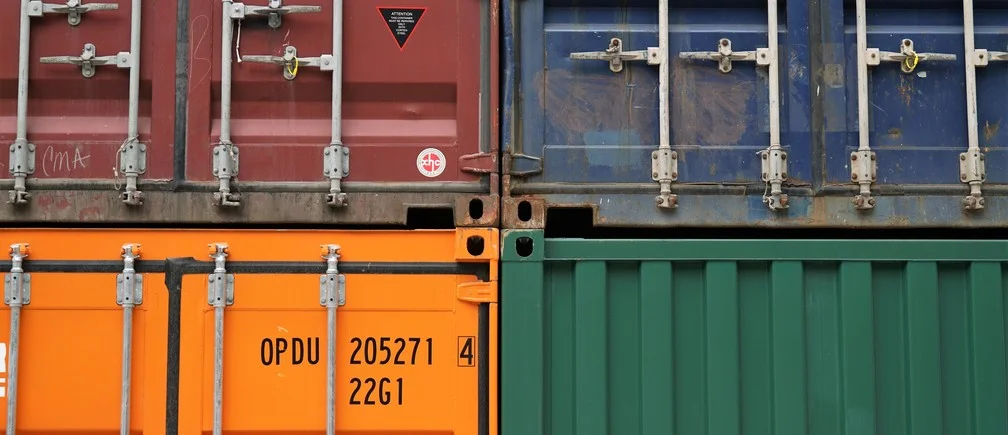In line with the development and delivery of a Risk Management System for Customs and OGAs under the Strengthening of the Trinidad and Tobago Electronic Single Window, On November 7-8, TTEK delivered a comprehensive 2-day Customs focused risk management workshop, designed exclusively for Customs practitioners.
The ASYCUDA Myth Part 4: Time to Open Source
The United Nations Conference on Trade and Development (UNCTAD) has never intended to open source ASYCUDA (as the WCO recently did in June 2017 with their Cargo Targeting System). It seems clear that Intergovernmental Organizations (IGOs) should not be in the business of building and selling rudimentary software solutions, and donors should not be funding the development or deployment especially when there is an appearance of a kickback scheme for a select few...
The ASYCUDA Myth Part 3: Where is ASYCUDA Millennium?
Today we launch the next chapter in our series on ASYCUDA. We hope you enjoy. If you missed parts 1 and 2, they can be accessed here:
In the last chapter, we discussed the findings of the UN Audits on ASYCUDA and UNCTAD in 2008 and 2012. In this chapter, we discuss the plans UNCTAD had for ASYCUDA and why they never actually emerged.
As requested by the UN Office of Internal Oversight Services (OIOS) in 2008, UNCTAD/ASYCUDA was asked to develop a strategy in regards to the development and roll-out of the next generation of ASYCUDA World branded as “ASYCUDA Millennium”...
The ASYCUDA Myth Part 2: United Nations Audit Reveals Collusion, and Conflicts of Interest
We’ve prepared a series of upcoming posts over the next 1-2 weeks regarding ASYCUDA that might draw some interest and discussion. A few months ago, I had posted a blog on ASYCUDA called: “The ASYCUDA Myth Part 1: Is UNCTAD fostering a No-Bid Sole Source Contract for ASYCUDA World?” This post can be accessed here and discussed the various tactics employed by UNCTAD to secure a sole source deployment of ASYCUDA under the guise of a misleading feasibility study.
The next in the series (posted here today) is called, “The ASYCUDA Myth Part 2: United Nations Audit Reveals Collusion, and Conflicts of Interest”, and is based on the United Nations Office of Internal Oversight services (OIOS) audits in 2008 and 2012. Surprisingly, many in our community are still unaware of these reports and the internal conflicts they exposed. Personally, I only discovered them in the last year. If you are in anyway involved in trade facilitation, customs modernization, and/or capacity building in the developing world, it is very important to understand the specifics of ASYCUDA development to date and where this system is likely headed.
This blog will be followed by 2 more blogs in the next 2 weeks called,
“The ASYCUDA Myth Part 3: Where is ASYCUDA Millennium?”
and ;
“The ASYCUDA Myth Part 4: Time to Open Source.”
I hope these blogs are enjoyed and prompt much discussion to make the positive change that is desperately needed.
How Blockchain Can Restore Trust in Trade (by Wolfgang Lehmacher)
I'll be honest. I'm intrigued but I'm still not entirely clear on how this can be used to enhance supply chain visibility for Customs and border processing. It's also not entirely clear yet how the trading community wants to implement this and how a Customs and Other Government Agencies will want to influence (if they should at all?).
The WCO CTS Myth – Part 2: A Closer Look at the Pros and Cons of an IGO Targeting System
A good discussion followed Part 1 of The WCO CTS Myth. Access the PART 1 blog here. Part 2 will focus on the functions and integration methodology for the system. It sounds like the WCO thinks it is doing the right thing by building an entry level targeting system for it’s members who want one. There’s nothing overly nefarious here. The problem is, it puts the WCO in direct competition with the technology vendors....
The WCO CTS Myth - Part 1: Is the WCO Marketing with the ASYCUDA model?
The World Customs Organization (WCO) is blocking the technology providers from those countries who require and seek a robust risk management solution, by suggesting their Cargo Targeting System (CTS) as the only viable solution available. No market awareness or survey is provided. Sure -the WCO will point members to the TEN network or WCO IT Conference, but it’s clear to us that members are shown all roads lead to the CTS…. especially when they are told it makes them compliant with WCO SAFE....
Is a Valuation Database the Best Way for Customs Authorities to Address Revenue Threats?
Time to open-source ASYCUDA and CTS? (by IBM's Stewart Jeacocke)
Stewart Jeacocke is the Customs Leader from the IBM Center of Competence. He's promoting what is likely the best idea yet for the future of ASYCUDA and the WCO's CTS.
Introducing Machine Learning into Customs Risk Management Capabilities
As part of our development road-map, we are blazing a new path forward by incorporating machine learning and artificial intelligence (AI) methodologies. What if you could automate your profiling of high risk shipments, people, and conveyances, and bring those "learnings" to your front end decision support system (e.g. our Operational Risk Management System) in real time? As part of our development road-map, we are going to merge the strategic back end historical trend analysis and predictive analytics with tactical and operational front end targeting and selectivity systems. Here's how...











